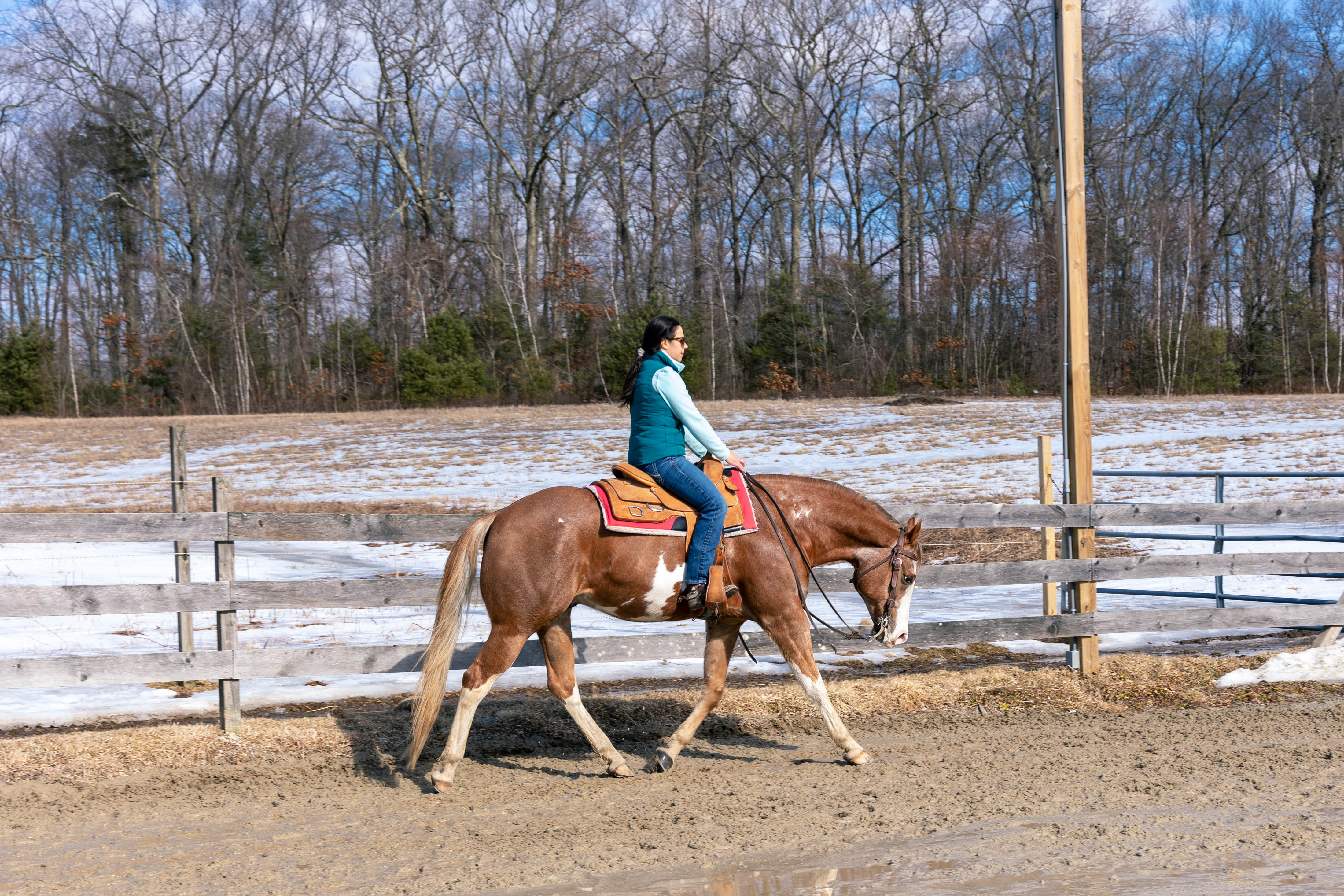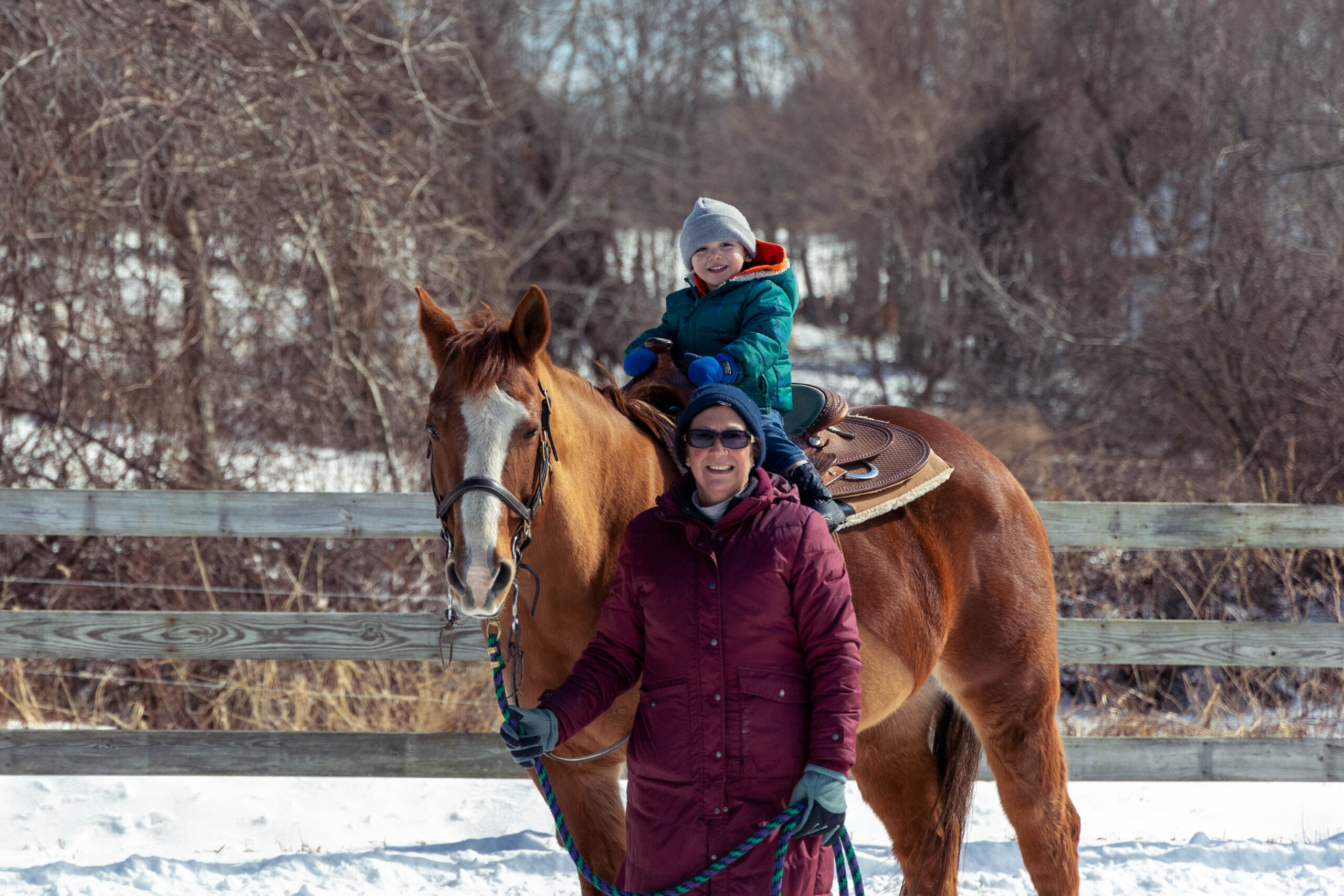Whether or not it’s ok to ride horses in cold weather below freezing (32 degrees F) is a heavily debated topic. Some people believe that horses can handle the cold better than humans thanks to evolution. Other studies have shown that at a certain point cold air can do damage to your horse’s lungs.
So how do you know if and when it’s too cold to ride? Studies show that when the temperature drops below 23 degrees F, riding can be dangerous and the cold air can cause damage to the horse’s lungs. Other conditions like poor footing due to cold hard ground, ice and snow she also be taken into consideration.
In this article we’ll take a look at the factors you should consider before deciding whether or not to ride in the cold. I’ll also share some tips for keeping your horse comfortable if you do plan to ride during the winter on cold days.
Breathing In Cold Air
The most controversial topic when it comes to winter riding is, is it too cold for my horse’s lungs? While studies have been conducted they were done in a climate controlled environment on a treadmill. No studies have been conducted outside in a natural environment and have not considered horses that may be well acclimated to their climates.
When a horse breathes in cold air the upper respiratory tract warms and humidifies the air before it reaches the lungs. The problem with exercise is that when the horse starts to exert themselves, say at a canter, the horse inhales more quickly and deeply. This means the body does not have enough time to warm the air. This doesn’t necessarily mean cantering is off limits, but it does mean it should be minimal. It’s probably not a good idea to canter your horse for 10 minutes straight. One lap with some walking in between might be ok, depending on your horse.
In conclusion, you can still ride in the cold if the other conditions like footing are satisfactory. However, exercise should be kept very light and at times this might mean only walking.
To read more about how cold air can affect your horse’s lungs and the studies that were conducted, check out this article How Cold Is Too Cold To Ride? by Paulick Report.
Slippery Footing
Another important factor when it comes to riding in winter, regardless of the temperature, is the footing! Even if your horse is barefoot or has snow shoes on there are still a few factors to consider. If the footing is icy and slippery, your horse can still slip and fall even with snow shoes on. Avoid riding on ice. The last thing you need is your horse to fall and get hurt, or worse, land on you!
Riding in the snow can be a lot of fun! However, it’s important to make sure if your horse wears shoes that they have snow pads to prevent snow from balling up in their hooves. When the snow gets packed into the hoof the horse will not be able to put their foot down flat which could cause them to stumble. Picture, walking in high heels and on slick hard ground.
You may also want to talk to your farrier about using borium studs to help prevent slipping and sliding when your horse is turned out or riding. Be mindful about this if your horse is boarded at a barn where there are a lot of horses. Some owners will not want their horse turned out with a horse wearing studs for fear of injury due to a kick. Your barn may have rules for how they handle the snow and turn out. So, talk to your farrier and your barn manager.
Lastly, there is the concern of deep snow. Deep snow can cover up potentially slick areas in the footing making it impossible for you to know where it’s safe to ride. Deep snow can also be lots of fun, but you’ll need to use common sense to decide if it’s safe to ride.
The bottom line is, equip your horse for winter as best as you possibly can and make sure to check the footing if you plan to ride outside before mounting up.

Strain On The Horse’s Body And Legs
In winter if you plan to ride outdoors you may be met with a variety of less than ideal conditions. First, is the cold, hard ground. The concussion of your horse’s feet hitting the hard ground can be tough on their hooves, legs and joints. If the footing is too hard, consider just taking your horse for a walk and avoid trotting and cantering.
The cold weather also means the time it takes to properly warm up your horse will take longer. Your horse’s muscles will need more time to warm up in the cold too!
Alternatively, you may be tempted to get out and ride in the snow! While riding in the snow is ok especially if your horse is equipped with borium studs and snow pads, it can still put strain on their bodies. Deep snow may cause your horse to lift their feet higher than normal and take bigger strides. This isn’t necessarily a bad thing, however working harder than normal could cause your horse to become sore.
Horses Getting Hot and Sweaty
The cold weather can make it difficult to cool out your horse properly as well. Try to avoid letting your horse get hot and sweaty in the first place if you can.
But, if they do get warm, make sure you use a cooler with wicking material to help your horse dry as they cool down and to prevent them from getting too cold. A wet horse with long hair is difficult to dry in the cold weather. However, it’s important that you get your horse thoroughly dry after a ride. Wet hair in the cold can be very dangerous for your horse. You’ll need to walk your horse and cool them out thoroughly after a hard work out in addition to keeping them warm and dry.
You can also consider clipping your horse if you plan to keep them in work throughout the winter. You will need to make sure to blanket appropriately if you choose this route. And, you may not need to clip your horse’s whole body. A trace clip or other partial clip may be suitable for your horse. Consult with your trainer about what is best for your horse based on the farm conditions and your horse’s work load. Clipping your horse will mean the ability to keep them dry, and if they do sweat to get them dry quickly.
Check out this article if you want to read more about Winter Horse Care and deciding whether or not to clip your horse.
Winter Riding Tips
Riding in the winter can be a lot of fun as I mentioned above. I have many great memories of riding my horses bareback in the snow as a kid or going on mystical snowy trail rides. So, if the temperature isn’t too frigid, go saddle up! Just be mindful of the conditions. Here are my suggestions for riding in the winter, but this is what works for my horses. Depending on your horse and facility, use your own judgement.
- Always check the footing before you mount up, even if it was ok the day before. Injuries are expensive and it means potentially losing saddle time with your horse.
- Use a quarter sheet to keep your horse’s hind end warm and to help your horse stay comfortable during a cold weather ride. The quarter sheet I use and like is linked here: Cold Weather Riding Gear
- If the temperature is under 23 degrees, focus mostly on walking. If you do a little bit of trot or canter, do it sparingly.
- Take the time to warm up properly, you don’t want to strain your horse’s muscles or cause them to become sore.
- Always cool out thoroughly, taking short cuts with cooling out and drying your horse off properly can have severe consequences.
- Use a wool or fleece cooler after your ride to help keep your horse warm while they dry off and cool down.
- Pick your horse’s feet after your ride to remove any balled up snow or ice chunks. You may even need to dismount and pick your horse’s hooves during your ride if there is a lot of snow.
I hope you found this article helpful! If you did, please share it!

